Simple Tips for Safer Sleeping for Your Newborn Baby
As parents, we always want to keep our children safe. This instinct starts when we fall pregnant (and it really never stops) but it can be overwhelming trying to determine how to keep our babies safe – especially when it comes to sleeping.
The stories and the statistics can be alarming but don’t worry we have compiled a list of safe sleep practices that can help parents to make informed decisions about the products you choose for your baby.
Before we jump in and discuss prevention, let’s talk about what the concern actually is?
What is Sudden Unexpected Death in Infancy (SUDI)?
Sudden unexpected death in infancy (SUDI) is a broad term and according to one of Australia’s leading authorities on safe sleep and pregnancy, Rednose, is used to describe the sudden and unexpected death of a baby for which the cause is not immediately obvious. When a SUDI incident is investigated the outcome maybe an accidental death, asphyxiation, infection, metabolic disorders, genetic disorders or non-accidental injury such as homicide, while others remain unexplained –these “unexplained deaths” are referred to as Sudden Infant Death Syndrome (SIDS).
Babies under the age of 12 months are more vulnerable to sleep-related injuries as a result of their anatomical and physiological make-up. There are a few factors that can increase this vulnerability further including prematurity, a low birth weight, exposure to cigarette smoke, drugs and alcohol, medical conditions and your baby’s immediate sleep environment.
As parents, there are a couple of factors we can’t control, but there are also many steps we can take to lower the risks of sleep related injuries like SIDS.
These tips apply to your baby’s overnight sleep space and all other places you put your baby to sleep or nap, through the day.
How to minimise the risks
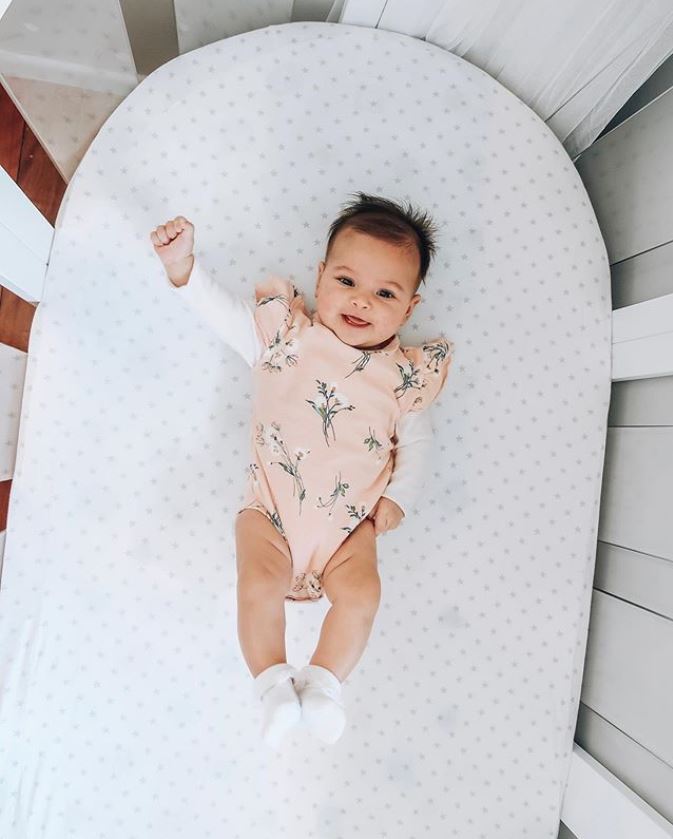
1. Always place your newborn on their back to sleep
If your newborn is placed face down, medical experts say that they are more likely to block their mouth and nose if the surface is soft and compressible, not breathable or they are unable to use their arms to push away from the surface. Your baby will grow and develop differently from other babies and this is certainly the case when it comes to their ability to roll, as babies roll at different ages. Often a baby may be able to roll onto their tummy but may not be able to roll back.
2. Lay your baby on a firm surface
Babies should always sleep on a firm surface. Traditionally many parents looked for soft and squishy mattresses, but medical experts now tell us, that these are not safe. The reason that they are not safe is that your newborn can settle into the mattress causing their respiratory passages to compress, so it is harder for them to breath or roll out off, if they roll forward.
There is an Australian Standard (AS/NZS 8811-1:2013 – Sleep Surface Test For Firmness) which was developed several years ago as a non mandatory guide for infant mattresses. We were the first brand to work with the Queensland Government to review the draft Standard and the test methodology. The tool used to undertake the test was designed by Ron Summers. It was enlightening to have all our mattresses tested with the tool, prior to the implementation of the Standard and rewarding to be assured that all our mattresses are firm and safe.
But remember it is not just about your infant’s mattress. Many infants have died when placed on couches, waterbeds and bean bags – so be aware of the spaces that you put your baby down to nap.
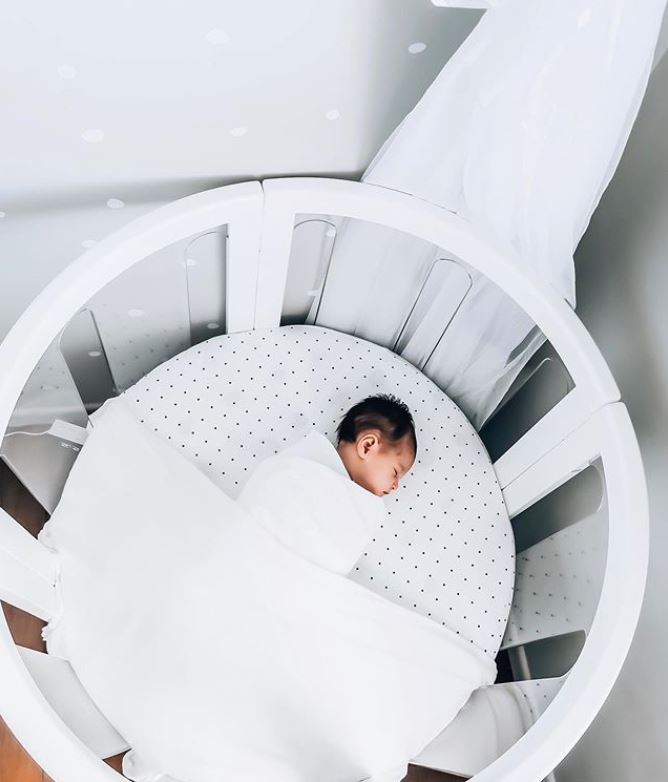
3. Lay your baby on a flat surface
An infant’s head is often a little larger and unsupported at birth, so their heads tend to tip forward naturally. So, it is important to lay your baby on a flat surface for sleeping. Products where the surface curves can bring your baby’s chin to chest. This will make it harder for your little bub to breath, as their airways are compressed. Products like hammocks, c-slings and car restraint capsules can create a C curve so it is best to ensure they are not used for sleeping.
4. Do not incline your newborn’s sleep space
In New Zealand, products that are inclined for sleeping are banned – these are products that put your baby on an angle when sleeping. Australia is yet to follow this ban, but it is prudent to note that inclined sleepers have been implicated in many infants’ deaths. Many Australian medical experts do not recommend infants sleep inclined. The reason being is that a newborn’s head may be pushed forward by the product and cause external airway occlusion and compromise their breathing, as their head falls forward. So it is fine to use swings and bouncers and other like play products, provided they are used under your supervision for playtime, but not sleep time.
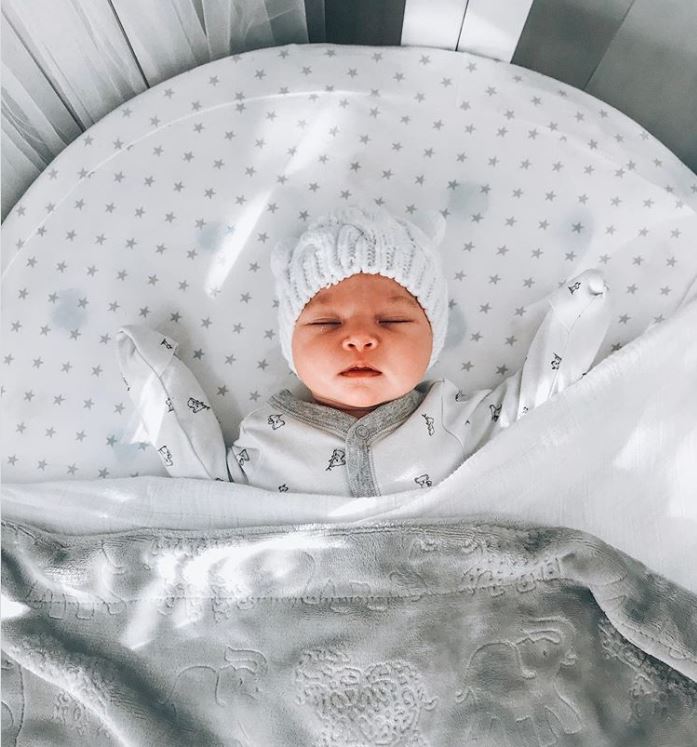
5. Keep your newborn’s airways clear
Ensure that nothing is in or around your newborn’s sleep space that could block their nose and/or mouth.
6. Do not compress your baby’s chest too firmly
A baby can suffocate if their chest or tummy is compressed too firmly. Experts do not recommend a weighted blanket for a newborn and if you swaddle your infant, then not too tight.
7. Remove any items that may be a strangulation or suffocation hazard from the sleep space
When setting up your nursery, be aware of what is around the sleep space. So, check to ensure no cords or straps or ties are within reach of your baby. These can be found in some sleeping pods with ties, monitors, window blinds and a raft of other products. You also need to check what you put on your baby, likes necklaces and drawstrings on clothing. These items can pose a strangulation hazard. Strangulation occurs when a product tightens or wraps around an infant’s neck and causes both airway obstruction and reduced blood flow to the brain.
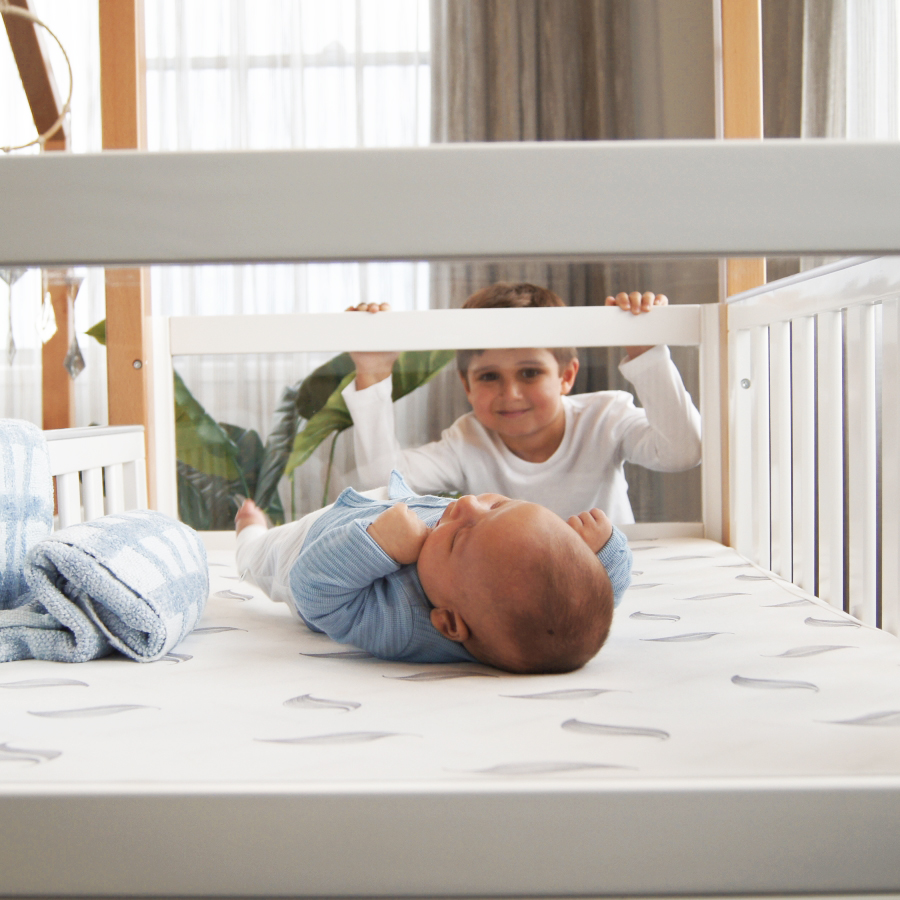
Other items to be aware of are loose bedding, soft pillows and toys, which pose a suffocation hazard to your baby. So always ensure that there are no loose items unnecessarily laying within your newborn’s sleep space, that may impact their breathability while sleeping.
8. Ensure products you purchase for your baby support optimal breathability
When shopping for baby’s sleep related products like mattresses, mattress protectors and bedding, look for more breathable textiles and fabrics like cotton and heat bonded fibre. Foam based products (like many mattresses) are not breathable and are made with hazardous chemicals and fire retardants, like formaldehyde. We all need a good mattress protector but rather than using one which covers the entire mattress, look for options that only cover the areas of the mattress you wish to protect and leave your baby free to breathe easier.

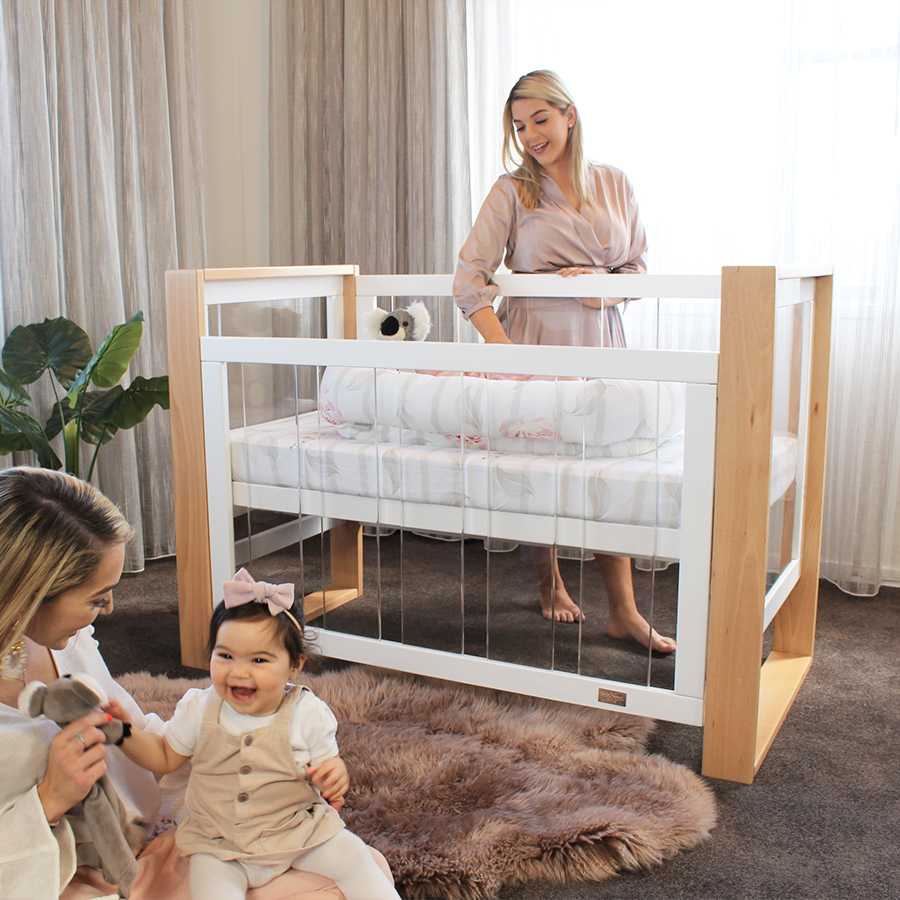
9. Only purchase cots that are tested in Australia to the Australian Standard
There are many reasons to purchase a cot tested in Australia. Once such reason is that the Australian Standard (AS/NZS 2172-2003) identifies what are hazardous gaps and requires cots to meet strict design requirements, that eliminate hazardous gaps. Hazardous gaps can cause a head or limb entrapment. An infant’s head is wider than their body (measured front to back). It is therefore possible for an infant to pass their body through a gap but be caught at the head. This can compromise their breathing.
If you are based outside of Australia, look for cots that meet the Australian Standard in your region, as it is a very rigorous standard.
10. Ensure your baby’s sleep environment is safe
We should not underestimate the impact that our surroundings have on our babies. It is important to regulate the room temperature and also the levels of carbon monoxide in the sleep space.
Infants have a reduced capacity to self-regulate their body temperature. Compared to us, their heads are large, with a greater surface area and therefore they can lose significant heat. There are many sleep products that can help to regulate their temperature but always check to see they do not cause overheating, strangulation hazards or restrict your infant’s movement – albeit their chest or arm movements. These products include beanies, onesies and sleeping bags.
Carbon monoxide poisoning can result from the use of heaters in small spaces, like a nursery. Carbon monoxide causes asphyxia as it blocks oxygen delivery to your baby’s tissues in their bodies, impacting their delicate organs. If possible, do not use heaters in your baby’s sleep space, unless you have sufficient ventilation.
A major SIDS risk factor is smoking, so do not allow smoking inside your home and especially areas where your baby sleeps.
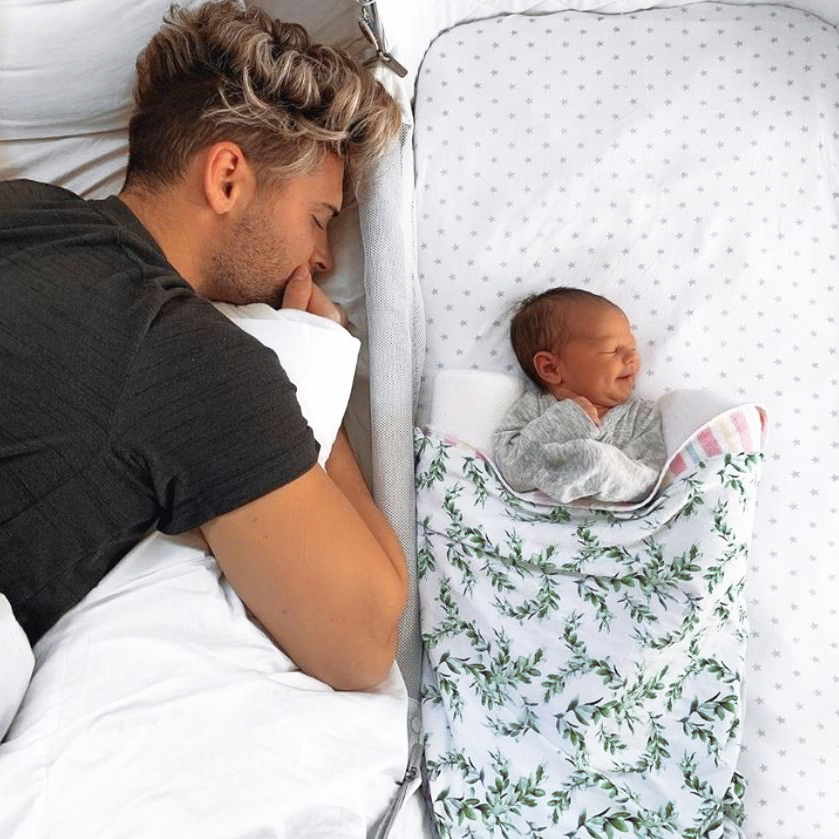
11. Sleeping in your bed or co sleeping
This is a tough one as experts’ opinions on co sleeping varies throughout the world. There are many factors that influence whether you choose to co sleep with your baby.
Currently in Australia, most medical experts will recommend that your newborn sleep in a separate bed, in your room.
There are several reasons why and perhaps the most significant are the risks of suffocation and strangulation to your baby, associated with co sleeping. Adult beds often have pillows and bulky bedding which may cover an infant’s face. This can result in rebreathing of CO2 that may cause what is called carbon pooling.
If you choose to co sleep, then experts recommend that you do not sleep on a sofa where your baby can roll off or into the cushions, do not co sleep if you or your partner are under the influence or smoke, do not cover your baby with a duvet or soft bedding, do not use pillows and avoid fabrics with loose threads and fibres.
So there many simple steps we can take to protect your newborn baby during sleep time. The right sleep products and using them correctly are an essential part of keeping your baby safe.
If you would like more information about Safe Sleeping please email our team on sales@babyhood.com.au or call our office during business hours on (07) 3208 3555.
